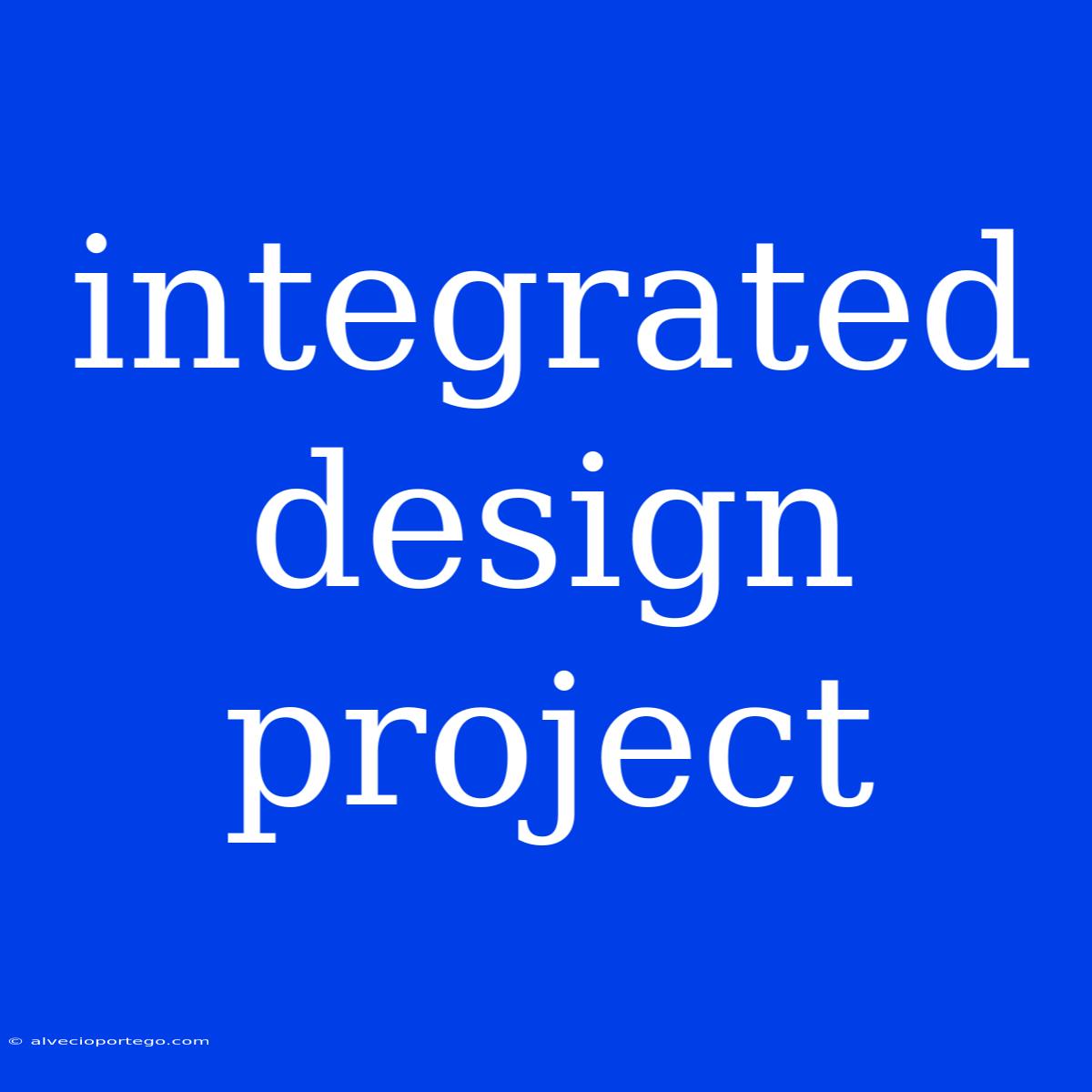Integrated Design Project: A Collaborative Approach to Innovation
An integrated design project, often referred to as an IDP, is a collaborative approach to problem-solving that brings together individuals from various disciplines to work on a shared goal. This interdisciplinary approach fosters innovation and encourages diverse perspectives, leading to more comprehensive and impactful solutions.
Why Choose an Integrated Design Project?
1. Holistic Solutions: IDPs allow for a holistic view of a problem, considering all its facets and potential impacts. This leads to solutions that address the core issues and avoid unintended consequences.
2. Cross-Disciplinary Collaboration: The core principle of an IDP is to bring together experts from different fields, such as engineering, design, business, and social sciences. This fosters a rich exchange of ideas and perspectives, leading to creative and innovative solutions.
3. Enhanced Communication: IDPs promote effective communication between disciplines, ensuring that all stakeholders understand the project's objectives and contribute effectively. This helps to eliminate silos and misunderstandings, leading to a more cohesive team effort.
4. Real-World Applications: IDPs often tackle real-world challenges, providing students and professionals with valuable experience in tackling complex problems. This hands-on experience prepares individuals for a collaborative and diverse workplace.
Key Elements of an Integrated Design Project
1. Clear Project Objectives: The project must have well-defined goals and objectives that are shared and understood by all team members.
2. Defined Roles and Responsibilities: Each team member should have clearly defined roles and responsibilities that align with their expertise and contribute to the overall project success.
3. Open and Frequent Communication: Effective communication is essential for successful collaboration. Regular meetings, progress updates, and open dialogue ensure that everyone is on the same page.
4. Iterative Design Process: IDPs typically follow an iterative design process, allowing for feedback and adjustments throughout the project. This iterative approach ensures that the solution evolves and adapts to changing needs and insights.
5. Documentation and Evaluation: Throughout the project, documentation and evaluation are crucial to track progress, identify areas for improvement, and demonstrate the project's impact.
Examples of Integrated Design Projects
IDPs can be applied to various fields and problems, including:
- Developing sustainable solutions for urban environments.
- Designing new medical devices and technologies.
- Creating innovative products and services for specific user groups.
- Improving existing infrastructure and systems.
Benefits of Integrated Design Projects
1. Increased Innovation: The cross-pollination of ideas and perspectives fosters creative solutions and opens new avenues for innovation.
2. Improved Project Outcomes: IDPs lead to more comprehensive and effective solutions that address complex problems from multiple angles.
3. Enhanced Teamwork and Collaboration: The collaborative nature of IDPs promotes communication, cooperation, and a shared understanding of project objectives.
4. Development of Essential Skills: Participants develop valuable skills in communication, collaboration, problem-solving, and critical thinking, preparing them for diverse professional settings.
Conclusion
Integrated design projects offer a powerful framework for tackling complex challenges and driving innovation. By bringing together diverse perspectives and expertise, IDPs foster creative solutions and promote a more holistic approach to problem-solving. Whether in academia, industry, or government, IDPs are becoming increasingly relevant as organizations strive for more effective and collaborative approaches to tackling complex issues.

